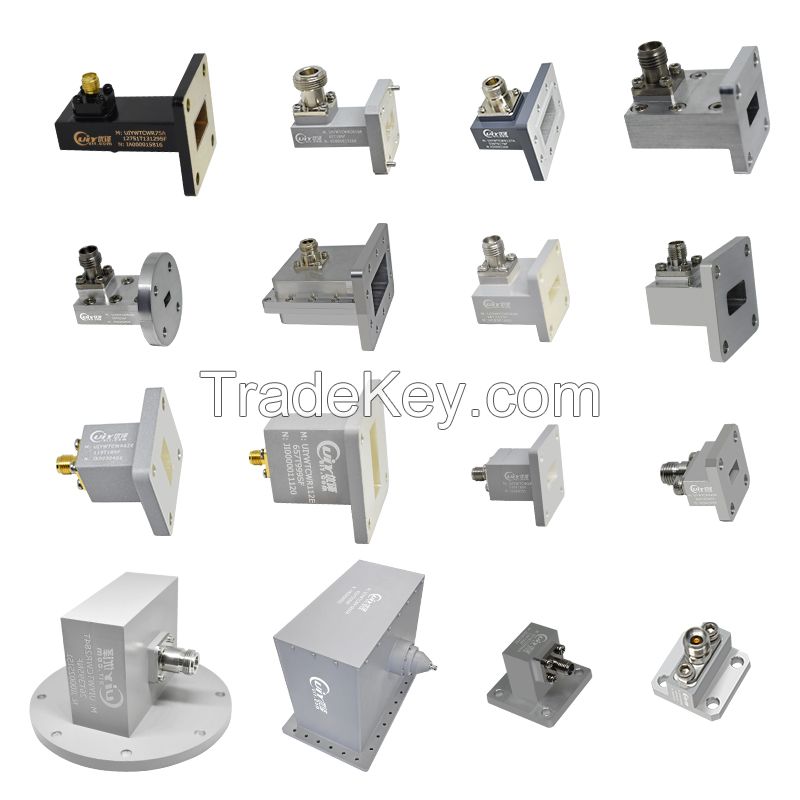Important parameters when looking for a Waveguide to coaxial
adapter :
Operating
Frequency:
frequency range over which waveguide to coaxial adapters meet all
guaranteed specifications.
Coaxial
Connector Interface: The type of coaxial connector depends
on the required interface and frequency of operation. The Gender
and Geometry of the connector must also be specified.
Waveguide
Size: Waveguide cross section is the size of the feed line
for the signal to pass through and is relative to the
wavelength of the signal. Cross Section is represented as
WR
followed by a number (for example: WR*0, WR*2, etc.). The
WR
means rectangular, and the number represents the size in
inches.
Flange:
Waveguide to coaxial adapters have flanges made of conductive
metals such as silver, copper, brass, bronze, and aluminum. These
flanges are available in a number of different styles of external
or internal ridges. They also have a range of profiles like
rectangular, square, or circular shapes based on the application
and system design.
Power
Handling (W/dBm): It is the maximum RF signal power that a
Waveguide to coaxial adapter can handle. These adapters can,
typically, handle up to ***0 W of
power.
VSWR: Voltage
standing wave ratio (VSWR) is a unit-less ratio ranging from one to
infinity, expressing the amount of reflected energy at the input or
output of the device. A value of one indicates that all of the
energy will pass through, while any other value indicates that a
portion of the energy will be reflected.
